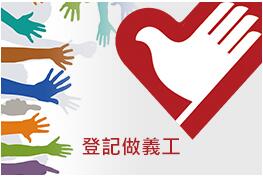About Rare DiseasesRare Disease Wiki

Jacobsen Syndrome (JS)
Name of disease:
Jacobsen Syndrome (JS)ICD-10 diagnosis code:
Q93.5Causes:
The syndrome is caused by deletion of one copy of the long arm of chromosome 11 (11q).Pattern of inheritance:
"85% de novo、15% autosomal dominant" In about 85% of cases, the deletion is due to a random error during the formation of the egg or sperm, or an error in cell division in early fetal development. This is called a de novo deletion. In about 15% of cases, the deletion is caused by a parent having a balanced translocation or from other, rare types of chromosome rearrangements. Although Jacobsen syndrome is typically not inherited, an affected person can pass the deletion on to his/her children.
Prevalence:
Whilst prevalence of Jacobsen syndrome is unknown, the birth prevalence has been suggested at 1/50,000-100,000 in the United States, with a female/male ratio of 2:1.Diagnosis:
Physical examination assesses the featured facial characteristics and other body symptoms. Blood tests assess the number of different blood cells especially platelet count. Bone marrow biopsy Molecular genetic test to confirm the deletion mutation in chromosome 11.
Age of onset:
Neonatal, AntenatalCommon signs and symptoms:
Bleeding disorder Low platelet count Bone marrow failure Intellectual disability Attention deficit-hyperactivity condition Abnormally large head Distinctive facial features (small and low-set ears, wide-set eyes, droopy eyelids, skin folds covering the inner corner of the eyes, broad nasal bridge; down-turned corners of the mouth, thin upper lip, small lower jaw) Delayed development of motor skills and speech Heart defects Short stature
Available treatments (medicinal and non-medicinal):
Currently no cure to this disease, treatment generally focuses on the specific signs and symptoms present in each individual.
Disease management tips:
Cardiac malformations can be severe and require heart surgery in the neonatal period. Special attention should be devoted to hematological problems. Newborns with JS may have feeding difficulties requiring tube feeding. Eye abnormalities may be treated with surgery, glasses, contact lenses, and/or other measures to improve visual problems. Abnormalities of the joints, tendons, muscles, and bones may be treated by orthopedic techniques, potentially in combination with surgery. Physical therapy may help improve coordination and mobility. Early intervention is important to ensure that affected children reach their full potential. Psychiatric care may also be warranted. Special education needs: most individuals with JS have intellectual disability (ranging from mild learning disabilities to severe intellectual disability).
References:
https://www.orpha.net/consor/cgi-bin/OC_Exp.php?Lng=GB&Expert=2308 https://rarediseases.info.nih.gov/diseases/307/jacobsen-syndrome
Other useful websites:
Patient Groups: 11q Research and Resource Grouphttps://www.11qusa.org/ Unique – Rare Chromosome Disorder Support Group https://www.rarechromo.org/ European Chromosome 11 Networkhttp://11q.chromosome11.eu/ Chromosome Disorder Outreach (CDO)https://chromodisorder.org/



